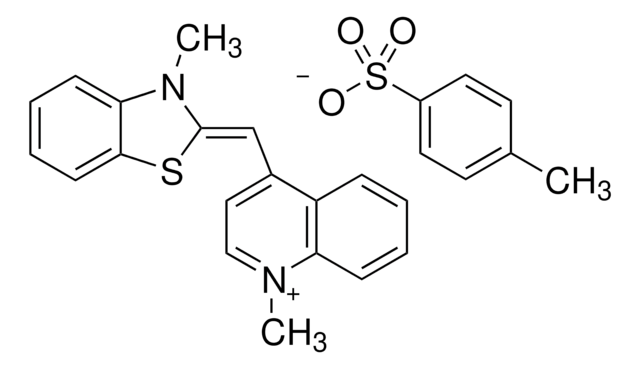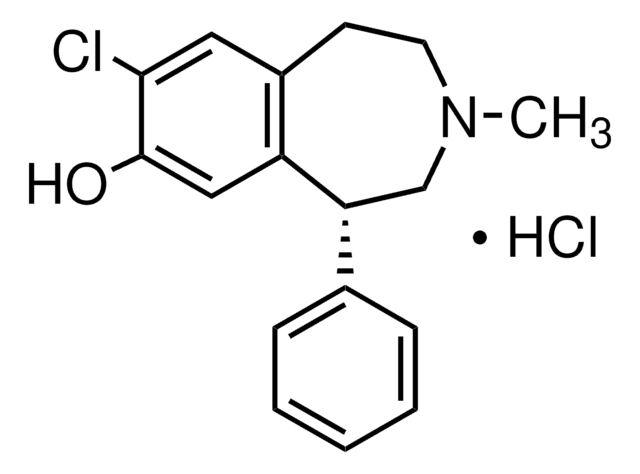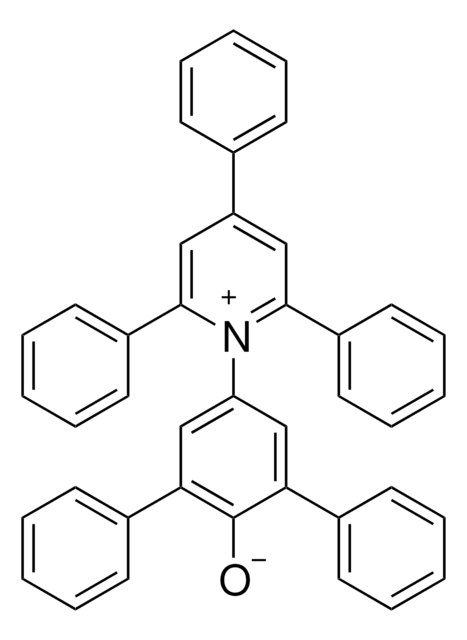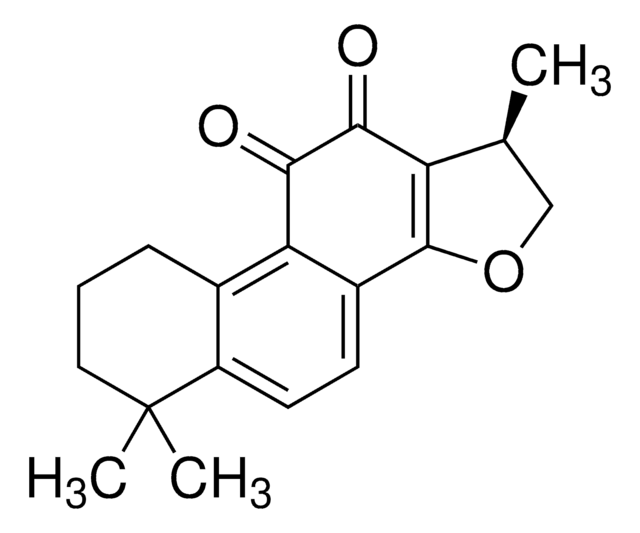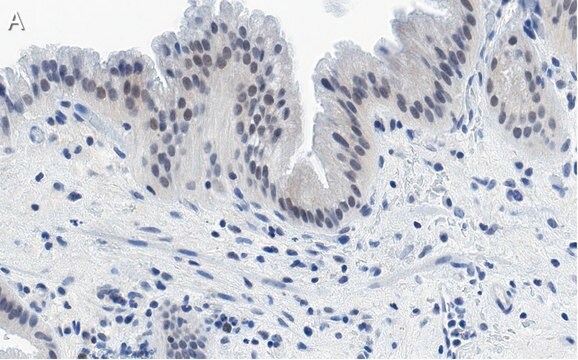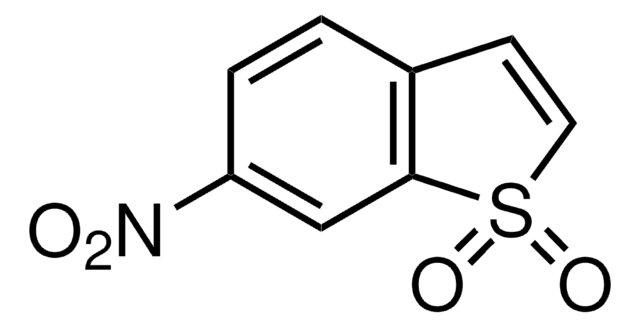おすすめの製品
品質水準
アッセイ
≥98% (HPLC)
フォーム
powder
保管条件
protect from light
色
yellow to orange-brown
溶解性
H2O: 5, clear (warmed)
保管温度
2-8°C
SMILES記法
CN1C2=CC=CC=C2OC1=CC3=CC=[N+](CCC[N+](C)(C)C)C4=C3C=CC=C4
InChI
1S/C24H29N3O.2HI/c1-25-22-12-7-8-13-23(22)28-24(25)18-19-14-16-26(15-9-17-27(2,3)4)21-11-6-5-10-20(19)21;;/h5-8,10-14,16,18H,9,15,17H2,1-4H3;2*1H/q+2;;/p-2
InChI Key
ULHRKLSNHXXJLO-UHFFFAOYSA-L
生物化学的/生理学的作用
シグナルワード
Danger
危険有害性情報
危険有害性の分類
Acute Tox. 3 Oral - Eye Irrit. 2 - Skin Irrit. 2
保管分類コード
6.1C - Combustible acute toxic Cat.3 / toxic compounds or compounds which causing chronic effects
WGK
WGK 3
引火点(°F)
Not applicable
引火点(℃)
Not applicable
適用法令
試験研究用途を考慮した関連法令を主に挙げております。化学物質以外については、一部の情報のみ提供しています。 製品を安全かつ合法的に使用することは、使用者の義務です。最新情報により修正される場合があります。WEBの反映には時間を要することがあるため、適宜SDSをご参照ください。
Jan Code
SML1792-VAR:
SML1792-1MG:
SML1792-BULK:
最新バージョンのいずれかを選択してください:
この製品を見ている人はこちらもチェック
ライフサイエンス、有機合成、材料科学、クロマトグラフィー、分析など、あらゆる分野の研究に経験のあるメンバーがおります。.
製品に関するお問い合わせはこちら(テクニカルサービス)